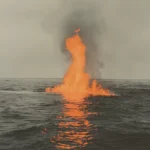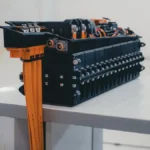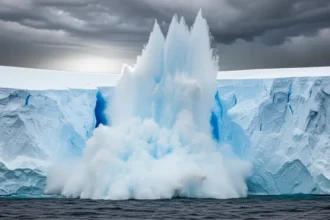Underwater Volcano Near Oregon Could Erupt Any Day Now
Have you ever wondered what happens when a volcano erupts deep underwater? Scientists are closely watching as Axial Seamount, a massive underwater volcano located 300 miles off Oregon’s coast, shows signs it might erupt as soon as tomorrow. According to reporting from DailyMail, this submarine giant sits nearly 4,900 feet below the ocean’s surface and is giving researchers clear warning signals that something big is brewing beneath the waves.
Why Scientists Think an Eruption Is Coming Soon
The ocean floor around Axial Seamount is literally swelling upward, pushed by magma rising from below. William Wilcock, a marine geophysicist at the University of Washington, explains that they’re currently detecting “a couple hundred earthquakes a day.” These underwater tremors happen when magma forces its way through rock, creating cracks and movement. When the volcano finally erupts, scientists expect an enormous spike in activity – possibly up to 10,000 earthquakes within just 24 hours!
Researchers have identified several warning signs that suggest an eruption could happen between tomorrow and the end of 2025. A major earthquake spike was recorded on April 13, and since May 6, daily earthquake numbers have been steadily climbing. This pattern closely resembles what scientists observed before previous eruptions in 1998, 2011, and 2015.
What Makes Underwater Volcanoes Different?
Unlike land volcanoes that dramatically spew ash and lava into the air, underwater volcanoes behave quite differently due to the enormous pressure of the ocean above them. Mike Poland, a scientist at the Yellowstone Volcano Observatory, explains that when Axial erupts, it will resemble a Hawaiian lava flow – but underwater. The immense water pressure prevents explosive eruptions, instead creating a relatively calm flow of lava across the seafloor.
When magma reaches the frigid ocean water, it rapidly cools and hardens, often creating distinctive pillow-shaped formations on the seafloor. This process is fundamentally reshaping the ocean bottom, building new geological structures in real-time. The eruption is expected to continue for about a month, slowly releasing magma that has been building up beneath the surface.
A Safe Natural Laboratory
- No Danger to People: Despite its impressive power, this volcano poses absolutely no threat to coastal communities because it’s so far offshore and deep underwater. The enormous weight of the ocean above it contains the eruption effects.
- Scientific Gold Mine: Researchers view this upcoming eruption as a rare opportunity to study underwater volcanic processes in detail. The data collected will help scientists better understand how the Earth’s crust forms beneath the oceans.
- Most Active in Region: Axial Seamount is considered the most active volcano in the Pacific Northwest, making it particularly valuable for ongoing research into volcanic behavior and prediction.
Learning From Past Eruptions
The 1998 eruption began with an earthquake swarm on January 23, with a massive dike of magma spreading 50 kilometers along the south rift zone in just two days. The caldera floor dropped by 3.2 meters as approximately 200 million cubic meters of magma moved. This history helps scientists understand what might happen during the next eruption.
The 2015 eruption was particularly well documented, with nearly 8,000 earthquakes recorded on April 24 alone, followed by seafloor subsidence exceeding 2.4 meters. Each eruption has provided valuable data, making predictions increasingly accurate. William Chadwick, a geophysicist at Oregon State University, has been studying these patterns to refine eruption forecasting models.
The World’s Best-Monitored Underwater Volcano
What makes this situation truly unprecedented is the sophisticated monitoring equipment already in place. “This particular volcano is probably the best-monitored submarine volcano in the world,” says Mike Poland. The Regional Cabled Array at Axial Seamount represents the largest undersea volcano monitoring system worldwide.
This advanced network includes seismometers that detect earthquakes, pressure-tilt devices measuring seafloor movement, hydrophones capturing sound, and even a high-definition camera and mass spectrometer. These instruments, operated by the National Science Foundation’s Ocean Observatories Initiative, provide scientists with near-real-time data about what’s happening deep below the ocean’s surface.
What We’ll Learn
When Axial Seamount finally unleashes its power, scientists will gain invaluable insights into how underwater volcanoes behave. This knowledge could improve prediction capabilities for other submarine volcanoes worldwide. As we wait for nature’s underwater spectacle to begin, the scientific community watches eagerly, instruments ready to capture every moment of this remarkable geological event.











